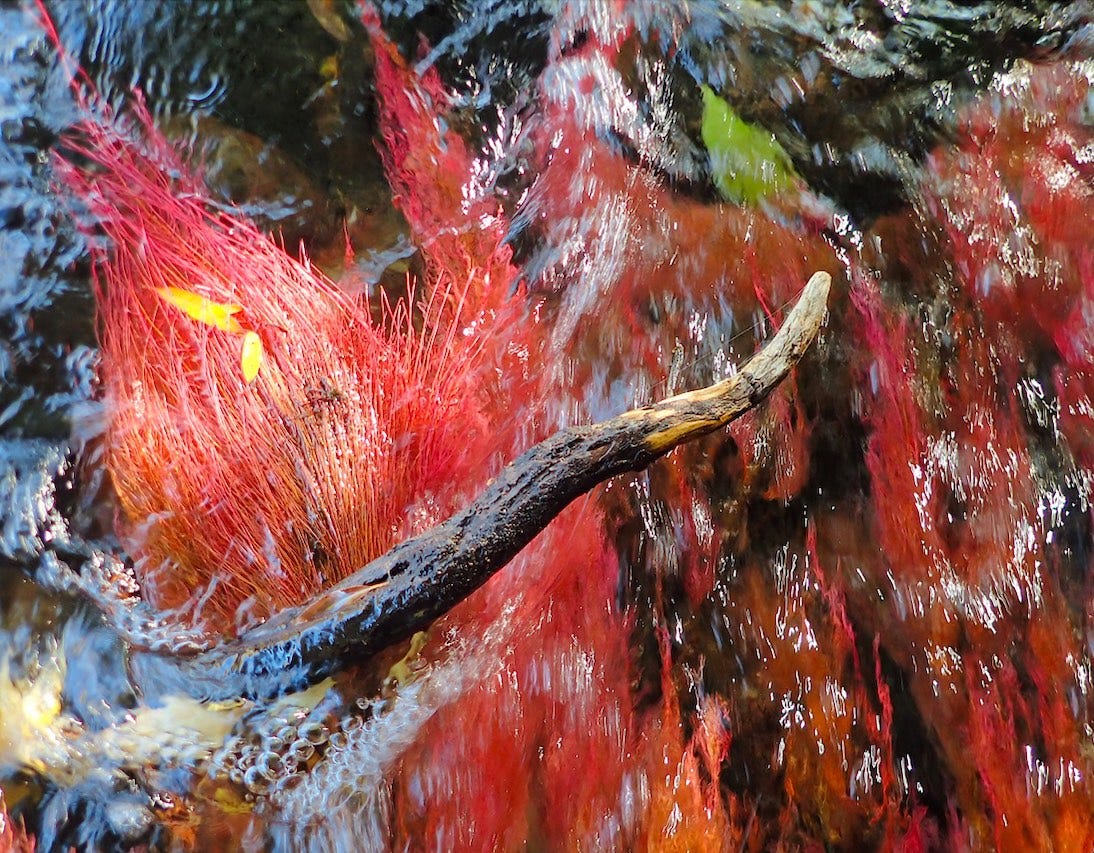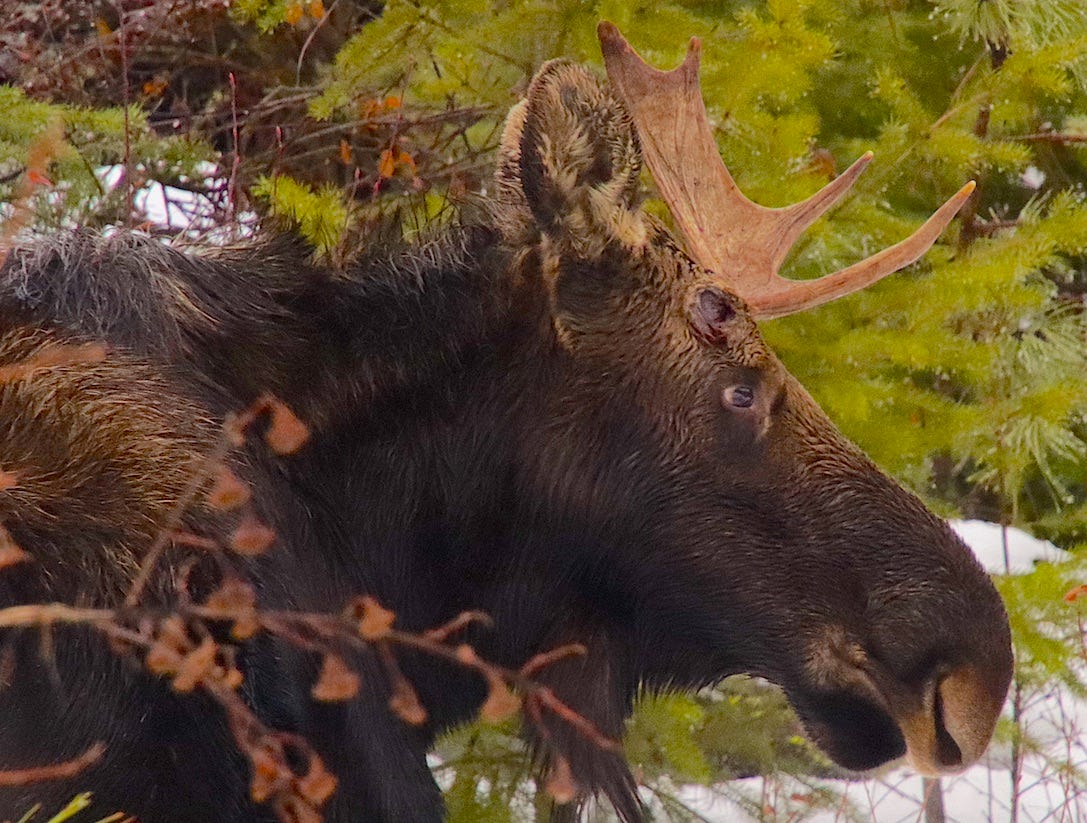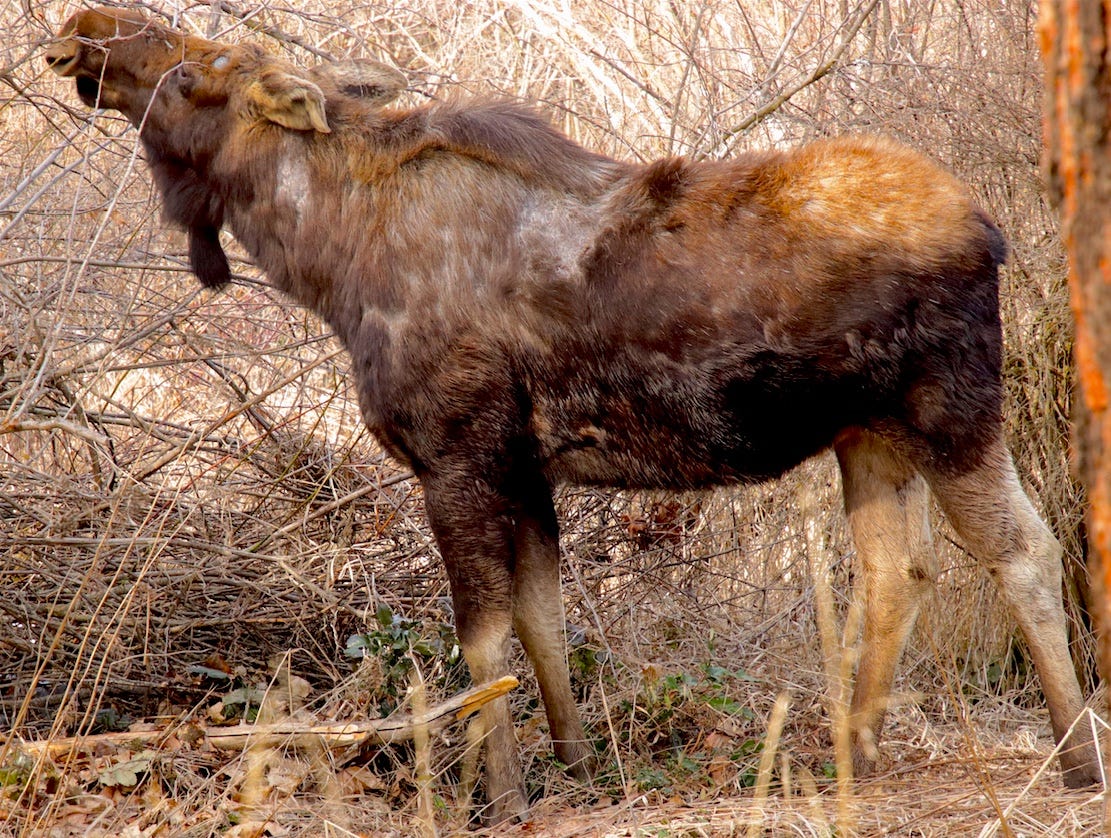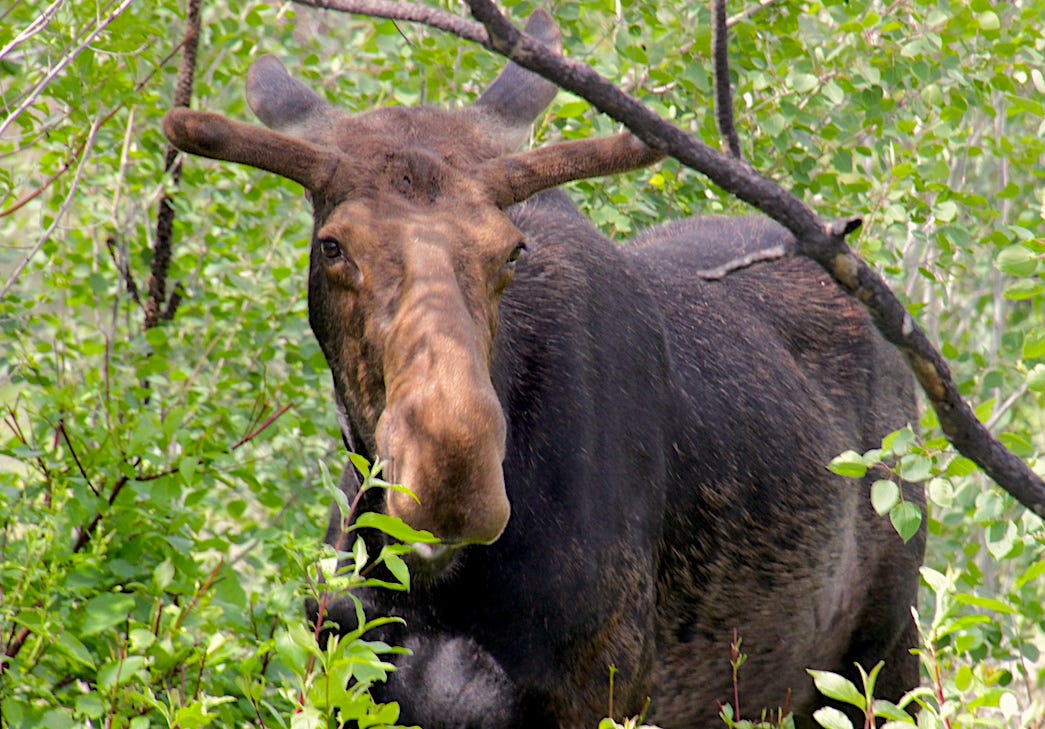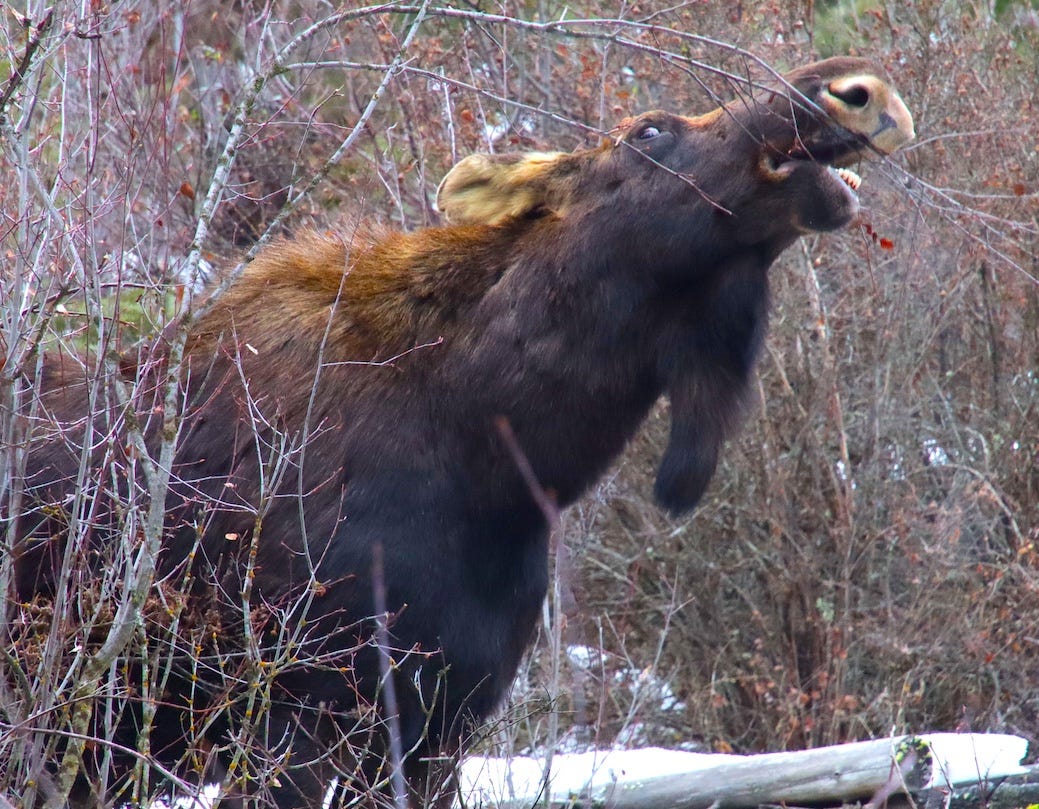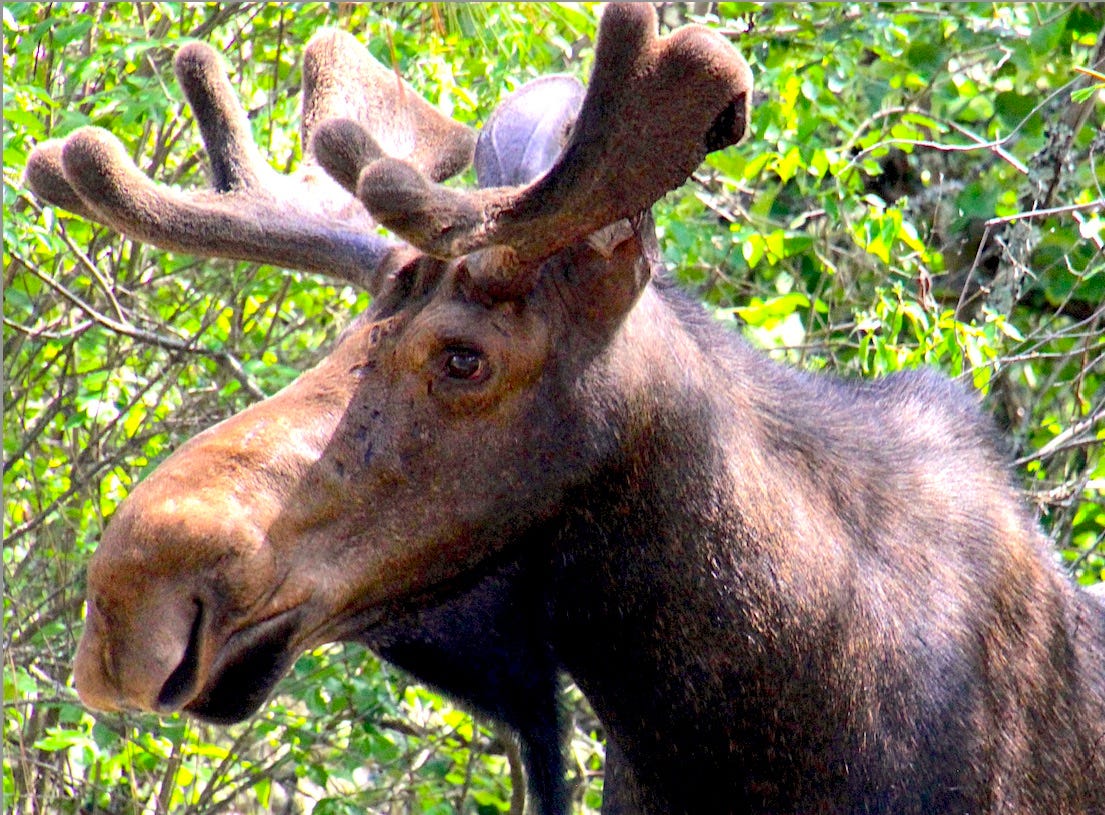Water rushing over streamside willow roots
I insist, after you…
The city I’ve lived in for most of the past forty years has a metropolitan area of well over a half million people. It’s an unlikely place to find wilderness given the urban density of its core. But wilderness, or at least wildness is here—fingered or platted into the mix, in part by the foresight of generations past (who insisted on setting aside urban parklands and wild spaces like the Dishman Hills Natural Area), and in part by a terrain that speaks with massive fists of basalt or ancient lake sediments that discourage efforts at development.
The metro area is laced with wildlife corridors, and if you live here long enough you are likely to see animals you may not expect, though probably not grizzly bears or caribou.
The first moose I remember seeing in Spokane came as something of a jolt. My parents’ home was in a well-developed area on the city’s lower South Hill, in a fairly dense residential area, about mile south of the freeway. I was just hanging with a smattering of my siblings at a reunion on the back deck when a very large moose appeared and trotted across the street below us with the confidence of a mail carrier.
I’ve since seen several more, and most have been in or near the city limits. I look for them even when I’m not looking for them, if that makes sense. My most recent encounter came as I was trying to photograph a wren hopping through the brush near the confluence of Latah Creek and the Spokane River—about a mile and a half from the city center. I followed the tiny, rasping bird into a thicket and suddenly heard a distinctive grunt. That refocused my attention on a bull moose several times my weight standing just a few feet in front of me. That’ll quicken your pulse.
Yes, they can be dangerous, but not as dangerous as some of the drivers you have to look out for when you’re riding a bike Spokane. They’re also majestic and goofy, and I’m good for either, or both.
—tjc
Visit the Rhubarb Skies photography store





